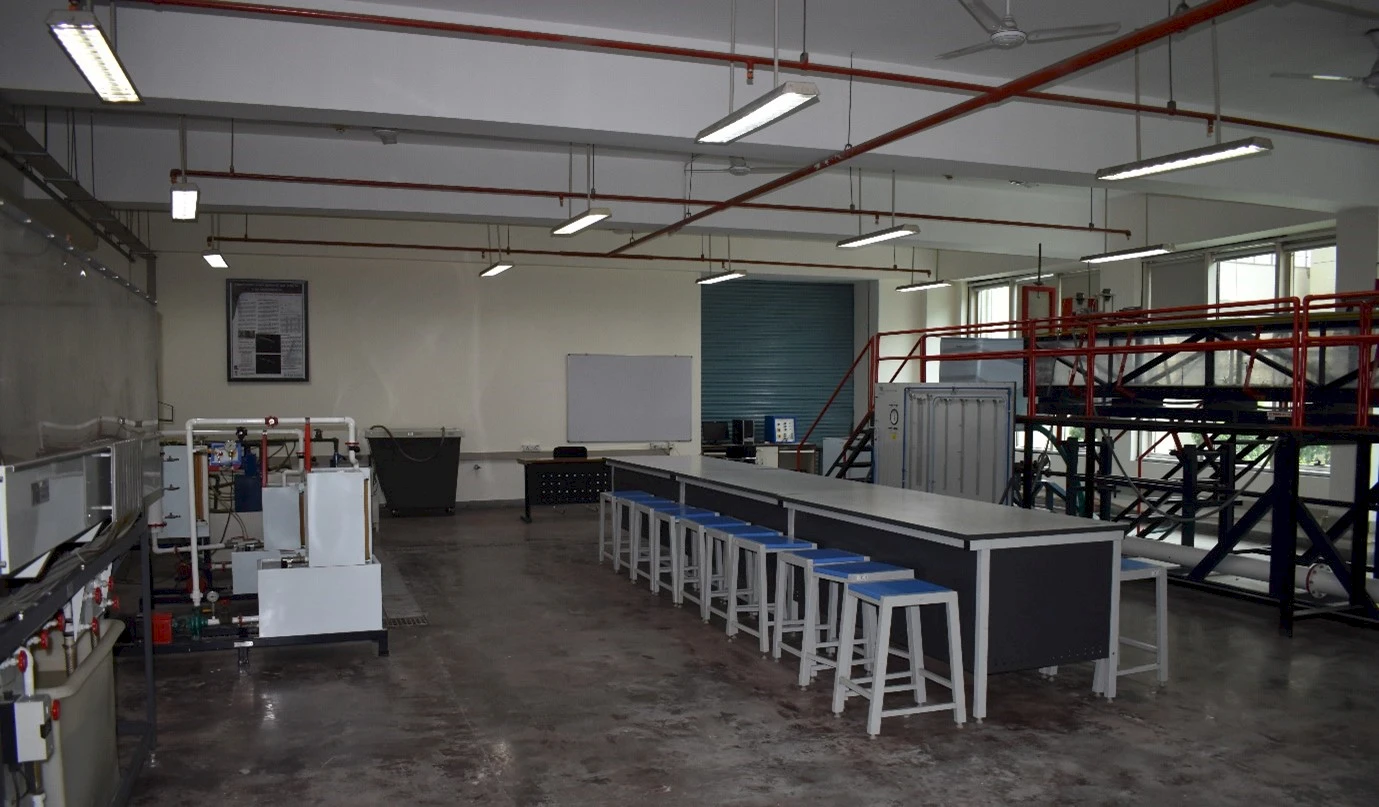Hydraulic Engineering
In the realm of hydraulic engineering, understanding the principles governing gravity flow is paramount. The Hydraulics Lab serves as a crucible for students to delve into the intricate dynamics of river flow through a series of illuminating experiments. This lab aims to unravel the mysteries surrounding gravity-driven water movement, shedding light on essential concepts such as the determination of roughness coefficient, water surface profile, velocity measurement in open channels, coefficient of discharge of spillways and weirs, and the intriguing hydraulic jump phenomenon.
Laboratory Resources and Infrastructure
Hydraulic Flume of dimension (L´W´H) 5.7 m ´ 0.3 m ´ 0.5 m. This apparatus consists of a flow channel with side rails, a trolley, a water storage tank, a pump, a pipe network, and a flow measuring device. The experimental channel is fabricated from transparent toughened glass (Perspex sheet) and stainless steel together. The channel section is kept transparent to visualize various flow patterns of fluid and to take desired photographs of the flow. A measurement tape/ ruler is provided along with the rail. To measure the flow depth, a pointer gauge is provided which can move on the rail through a trolley. This size of flume could be accommodated in the current available space.
Figure: tilting flume for open channel flow experiments.
Equipment Facility
Acoustic Doppler velocimetry (ADV): It is engineered to instantly record velocity components at a single location with a relatively high frequency. It accomplishes this by measuring the velocity of particles within a remote sampling volume based on the Doppler shift effect. The utilization of the Doppler shift effect allows for precise measurement of particle velocities in the fluid, contributing to a comprehensive analysis of fluid dynamics.
Pitot static tube: This probe concurrently assesses both stagnation pressure and static pressure, providing the essential parameters for calculating the flow speed. This is mainly used to measure water velocity in our open channel flow experiments.
Inverted U-tube manometer: This is used to measure the pressure difference between two limbs of the U-tube manometer. This helps in measuring the water velocity in our open channel flow experiments.
Laser digital gauge: A depth gauge is an instrument for measuring depth below a vertical reference surface. It provides accurate information for an uneven surface, such as the nonuniform distribution of the sedimented surface.
Manual vernier pointer gauge: A depth gauge is an instrument for measuring depth below a vertical reference surface. It is helpful for measuring the water surface profile.
Images from the lab
Externally funded grants
Ongoing externally funded research projects
Project tile: A novel hybrid approach for the design of stilling basin to counter the downstream local scour (2022-2024)
- PI: Dr. Ellora Padhi
- Funding Agency: SERB, Govt. of India
- Funding Amount: ~ ₹21 lakhs
TEAM
- Faculty
- Gopal Das Singhal, Associate Professor & Associate Head, Department of Civil Engineering, SNIoE
- Ellora Padhi, Assistant Professor, Department of Electrical Engineering, SNIoE
- Lab Staff
- Rajneesh Kumar, Department of Civil Engineering, SNIoE
- Doctoral Research Students
- Vikalp Chauhan (July 2019 - present)
- Nishank Agrawal (August 2021 - present)
- Sumit Kumar (January 2023 – present)
- Undergraduate Researchers
- Prashant Verma (Opportunities for UG Research 2022-23 & Final Year Project 2023-24), B. Tech., Civil Engineering
- Anika Govil (Opportunities for UG Research 2023-24), B. Tech., Civil Engineering, 3rd year
- T. Chaturrya Final Year Project 2022-23), B. Tech., Civil Engineering, 4th year
Location: C009
